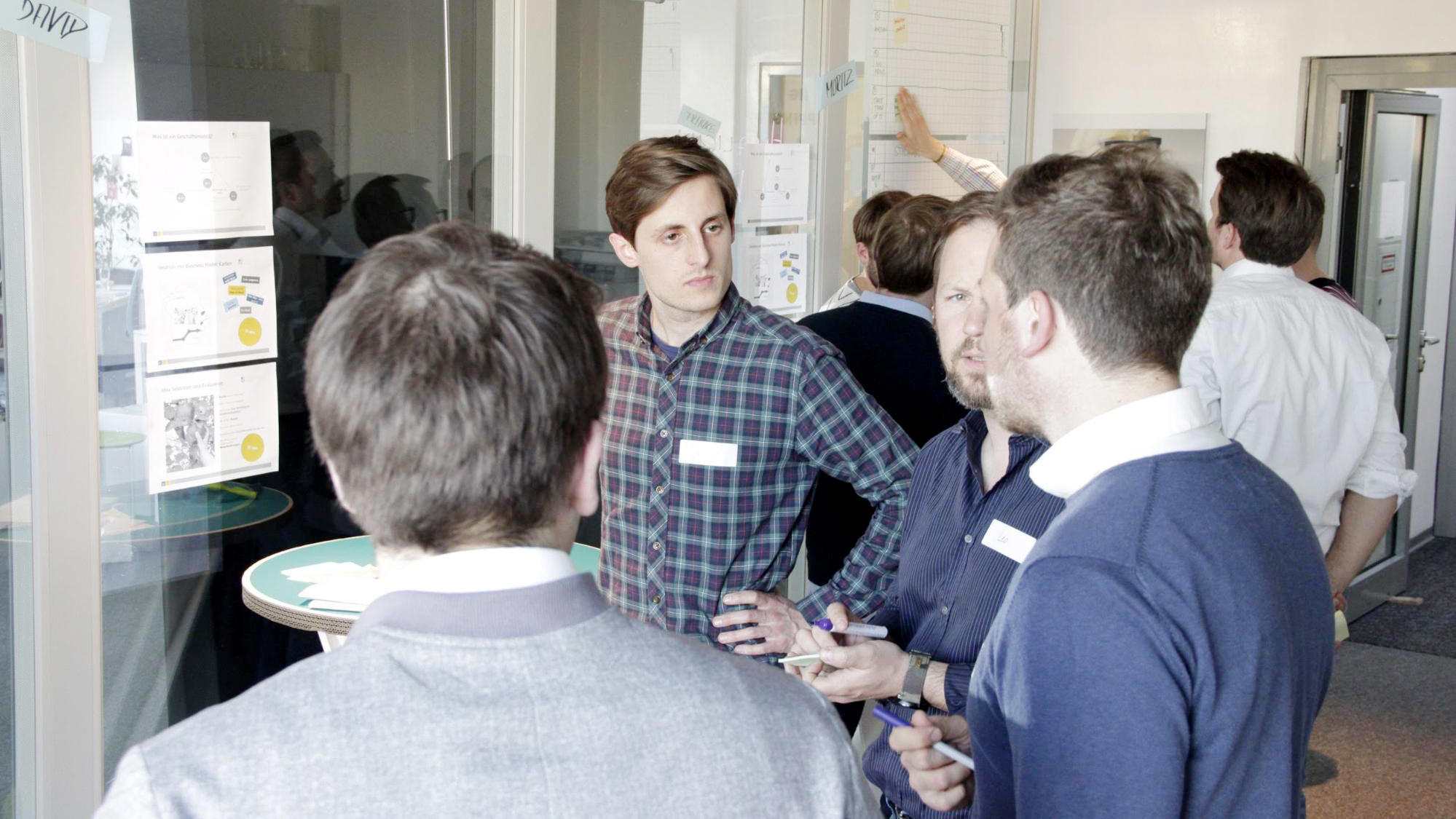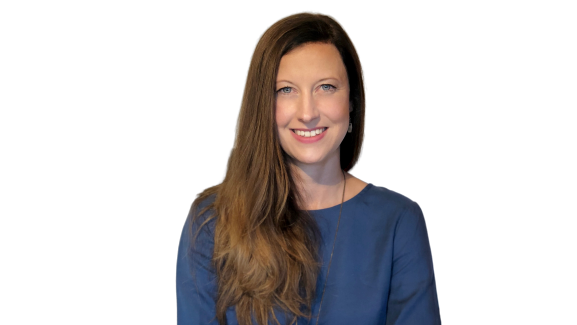Making sense of our connected world

Roundtable „VCs X Startups“ at HIIG
Our roundtable “VCs X Startups” at HIIG provides a platform that allows founders to address challenges they are facing whilst starting up, and to discuss these with selected venture capitalists and researchers. During our second roundtable, we focused on the business model of the participating startups with a particular dedication to its challenges and to methods of changing it, if needed. By providing the founders with a tool set for business model innovation, inspired by successful business model typologies, we hoped to facilitate their next steps in the startup process.
Am 21.04.2015 war es wieder so weit und wir öffneten die Türen des HIIG für unseren Roundtable zum Thema “VCs X Startups: Perspektivenwechsel auf Geschäftsmodelle und deren Potenziale”. Zusammen mit 12 Gründern, 4 Venture Capitalists und 4 Forschern hatten wir uns ein straffes 3,5 stündiges Programm vorgenommen: Am Anfang unserer Agenda stand die Vorstellung der Gründer und ihrer Geschäftsmodelle anhand der Elemente Kunde und Markt, Produkt und Service, Umsatzmodell, Kostenstruktur, Wertschöpfungsprozess sowie deren aktuelle Herausforderungen. Unsere Intention war es, ein allgemeines Verständnis für die Geschäftsmodelle der anwesenden Gründer zu schaffen und diese in der Gruppe zusammen mit den Investoren zu diskutieren. Schnell stellte sich heraus, dass vielen Gründern ähnliche Herausforderungen begegnen, wie bspw. lange Vertriebszyklen, Liquiditätsengpässe, Identifikation von Zielkunden und Validierung des Nutzenversprechens.
 Eröffnung des Roundtables: Einführung in das Geschäftsmodell-Framework von Gassmann et al., 2013
Eröffnung des Roundtables: Einführung in das Geschäftsmodell-Framework von Gassmann et al., 2013
Um die Diskussionen weiter mit Expertise zu unterfüttern, hatten unsere VC Experten kurze Impulsvorträge aus ihrem Geschäftsalltag mitgebracht. Dagmar Bottenbruch, seit Jahren erfolgreicher Business Angel, teilte mit der Runde ihre Erfahrungen zur erfolgreichen Unternehmerpersönlichkeit, die sie anschaulich als „Charming Asshole“ – den charmanten, jedoch durchsetzungsfähigen Gründer – beschrieb. Moritz Poewe, Partner bei Paua Ventures, stellte anhand eines Praxisbeispiels anschaulich dar, welche Rolle VCs in der Geschäftsmodellentwicklung spielen können, indem sie Gründerteams bei der starken Fokussierung auf ein bestimmtes Segment unterstützen.
 Ideengeneration zur Erweiterung des bestehenden Geschäftsmodells inspiriert von Geschäftsmodellmustern (Baden-Fuller & Morgan, 2010; Gassmann et al., 2013)
Ideengeneration zur Erweiterung des bestehenden Geschäftsmodells inspiriert von Geschäftsmodellmustern (Baden-Fuller & Morgan, 2010; Gassmann et al., 2013)
Angeregt durch die Diskussionen zu den Geschäftsmodellen und den aktuellen Herausforderungen läuteten wir den nächsten Punkt auf der Agenda ein, der eben diese Schmerzpunkte beleuchten sollte. Moderiert von den Forschern versammelten sich die Gründer in vier Gruppen, um anhand gängiger Geschäftsmodellmuster, wie z.B. dem Razor-and-Blade Modell, Ideen für eine mögliche Weiterentwicklung ihres eigenen Geschäftsmodells zu entwickeln. Die vielfältige Expertise der Gründer wurde in der Diskussion von den Investoren, die jeweils einer Kleingruppe zugeteilt waren, ergänzt. So ergab sich schnell eine bunte Ideenwelt zu jedem teilnehmenden Startup.
Das Ergebnis dieser intensiven Ideation-Sessions waren diverse neue Anregungen für Produkt-Features, Services und Umsatzmechanismen. Die Moderatoren der jeweiligen Gruppen machten aber auch immer wieder deutlich, dass es im Rahmen der Ideation weniger um ein Neu-Erfinden des bestehenden Geschäftsmodells ging, als vielmehr darum, Impulse für dessen Weiterentwicklung zu generieren und eine kreative Methode kennenzulernen, die zukünftig auch im Startup-Alltag eine Rolle spielen kann.
Die Kondensation der Ergebnisse und die neuen Impulse aus den Kleingruppen stellten die Gründer abschließend dem gesamten Teilnehmerkreis vor. Dabei konnte beobachtet werden, wie durch die Rekombination von verschiedenen Geschäftsmodell-Mustern und Analogien aus verwandten Branchen sowohl inkrementelle Variationen, als auch sogenannte “Wild Ideas” entstanden waren.
 Bewertung von Ideen anhand des 4-I Frameworks von Frankenberger et al., 2013
Bewertung von Ideen anhand des 4-I Frameworks von Frankenberger et al., 2013
Nach 3,5intensiven Stunden beendeten wir unseren Roundtable zu den Geschäftsmodellen der Startups mit Pizza, Bier und vielen angeregten Gesprächen neuer Bekannter, die hoffentlich auch noch in Zukunft wieder zusammen kommen, wenn es um Startup-Partner, Kollaborationen oder Anschlussfinanzierungen geht.
Ich möchte mich an dieser Stelle noch einmal bei den Gründern und Dagmar Bottenbruch, Moritz Poewe (Paua Ventures), Simon Schmincke (Earlybird Ventures) und Frauke Mispagel (Axel Springer Plug and Play) sowie allen Kollegen des Innovation und Entrepreneurship Teams für die Unterstützung bedanken. Danke, dass Ihr alle mit so viel Energie und Offenheit dabei wart.
Weiterführende Literatur
Baden-Fuller, C., & Morgan, M. S. (2010). Business models as models. Long Range Planning, 43(2), 156-171.
Frankenberger, K., Weiblen, T., Csik, M., & Gassmann, O. (2013). The 4I-framework of business model innovation: A structured view on process phases and challenges. International Journal of Product Development, 18(3), 249-273.
Gassmann, O., Frankenberger, K., & Csik, M. (2013). Geschäftsmodelle entwickeln: 55 innovative Konzepte mit dem St. Galler Business Model Navigator. Carl Hanser Verlag GmbH Co KG.
This post is part of a weekly series of articles by doctoral canditates of the Alexander von Humboldt Institute for Internet and Society. It does not necessarily represent the view of the Institute itself. For more information about the topics of these articles and asssociated research projects, please contact info@hiig.de.
This post represents the view of the author and does not necessarily represent the view of the institute itself. For more information about the topics of these articles and associated research projects, please contact info@hiig.de.

You will receive our latest blog articles once a month in a newsletter.
Digital future of the workplace
Polished yet impersonal: The unintended consequences of writing your emails with AI
AI-written emails can save workers time and improve clarity – but are we losing connection, nuance, and communication skills in the process?
AI at the microphone: The voice of the future?
From synthesising voices and generating entire episodes, AI is transforming digital audio. Explore the opportunities and challenges of AI at the microphone.
Do Community Notes have a party preference?
This article explores whether Community Notes effectively combat disinformation or mirror political biases, analysing distribution and rating patterns.




